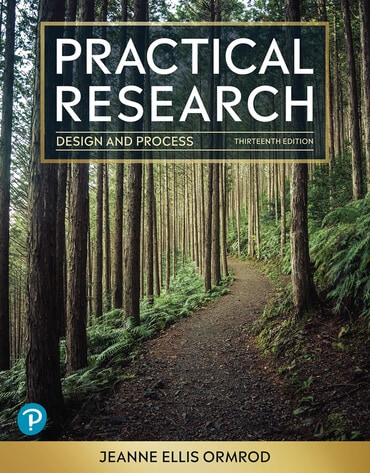
The expansion of research designs, methodologies, processes, and practices

Researchers’ beliefs about legitimate and credible research designs, methodologies, processes, and practices have expanded in a great many ways since the 1970s, and I — who obtained my bachelor’s, master’s, and doctoral degrees in the 1970s — have observed the continual expansion over the past several decades with both awe and delight. There is so much more that we, as a larger society, can learn when we look at puzzling phenomena from multiple angles and perspectives!
Noteworthy Changes in Practical Research, 13th Edition (2024)
To capture recent trends in research methodologies and perspectives, I have made several noteworthy changes to the content of the latest edition:
- I have significantly reorganized and greatly expanded discussions of various action research and participatory designs (see Chapter 10). A separate blog post presents a brief description of action research.
- I have increased discussions of the ethics of research and possible biases that might adversely affect the quality of a research project and/or research report (see Chapters 4, 6, 7, 8, 9, 10, 11, 12, and 13).
- I have added discussions of open science practices (see Chapters 5 and 13). A separate blog post provides a short overview of what open science can entail.
- I have included several new illustrative examples of research methodologies (see Chapters 8, 9, and 10).
- With the assumption that my readers are now more technologically literate than they were even a few years ago, I have updated discussions of technology-based strategies (e.g. new software options) while cutting back on coverage of more elementary strategies (e.g. how to use word-processing software).
- I have added five new Conceptual Analysis features with which readers can self-assess their understanding of key concepts and principles in the book (see Chapters 1, 6, 11, and 12).
- At the end of each chapter, I have added a short summary that can help readers mentally revisit and review central ideas within the chapter.
Beginning with the 12th edition, the book no longer includes a chapter on historical research. (With significant advances in other research methodologies, there was simply no longer any room in the book for it.) Yet historical research methodologies are essential for students in history and related disciplines and can also be useful in other disciplines. Readers who would like to learn more about historical research can find an entire chapter on the topic in the book’s 11th edition, published in 2016.
Two changes in the latest, 13th edition of Practical Research appear on the book’s cover and title page. First, the subtitle of the book, previously Planning and Design, has changed to Design and Process. Although this change might strike my readers as a subtle one, it reflects the ways in which the book’s contents have evolved over the years to focus increasingly on the many, many simultaneous and sequential processes — not only physical processes but mental processes as well — that underlie well-designed, high-quality research endeavors.
Second, whereas Paul Leedy and I have been coauthors of the past several editions of the book, I am now listed as sole author. To explain this change, I must go back to the very first edition. In the early 1970s, as a professor at American University, Paul saw the need for a research methods book that provided specific, concrete guidance for students and other novice researchers who were working on independent research projects (e.g. projects for masters’ theses and doctoral dissertations). The result was the first edition of the book, published in 1974.
As various research methodologies continued to evolve in many academic disciplines, Paul updated the book in 2nd, 3rd, 4th, 5th, and 6th editions (with contributions by Tim Newby, Peggy Ertmer, and the editorial staff in the 6th edition).
With Paul’s eventual retirement, his editor, Kevin Davis, asked me to take over, beginning with the 7th edition. Paul’s ideas and words have always been key elements of the book, however, and thus it was quite appropriate to list us as coauthors. But as I wrote the 13th edition, the book had changed so much that it made sense to Pearson’s editorial staff that I become sole author.
About the author

Jeanne Ellis Ormrod, Author and Educator
Jeanne Ellis Ormrod is an educational psychologist with specializations in learning, cognition, and child development. She received a PhD and an MS in educational psychology at The Pennsylvania State University and an AB in psychology from Brown University. For many years, she was a faculty member at the University of Northern Colorado, where she taught courses in learning and cognition, educational psychology, measurement, and research methods. She is currently Professor Emerita of Psychological Sciences at UNC.




